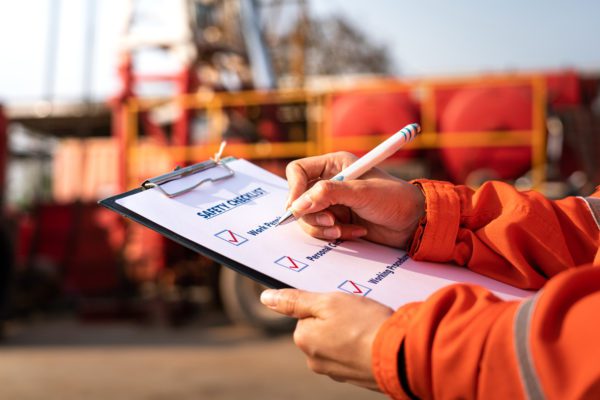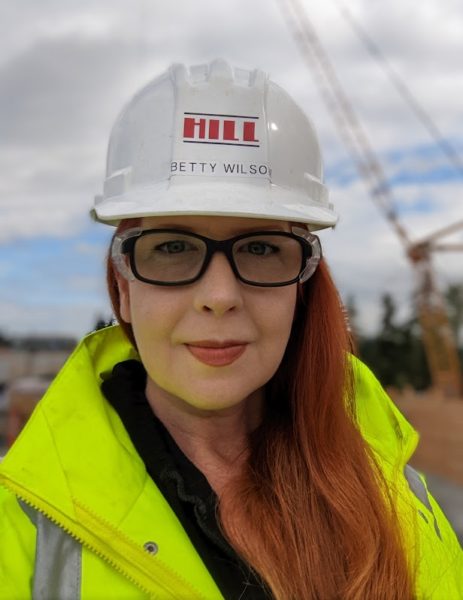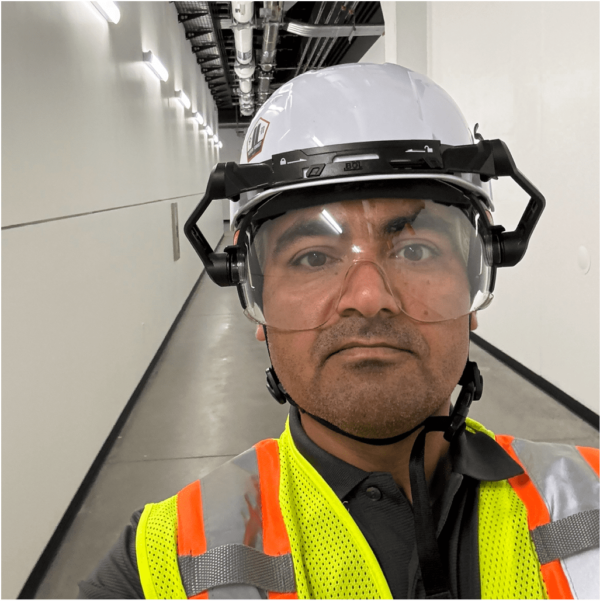
October 22, 2024 | Articles
Walking the Talk: New Vice President, Rail and Transit Gavin Martin

In my last article, I discussed safety culture, its importance, and how an experienced safety professional can contribute to its development. Now, I’d like to take on the work of the safety professional. Specifically, what makes a good safety professional? What is their role on construction projects? Who is really behind the curtain?
The Attitude: Conviction and Compassion
There is a lot of sociology to building a behavioral-based safety culture, and it’s commonly misunderstood. I hear the word empathy used all the time in relation to safety, but empathy has nothing to do with it. Empathetic people can empathize with those at risk as well as with those creating risk. It’s not empathy that’s needed, but rather a core conviction that life must be protected and enough compassion to understand that every person on a project has someone who counts on them. It doesn’t really matter who or what—husband, wife, kids, neighbors, friends, a dog, a cat, goldfish, a lawn, a windowsill succulent.
Those two things, conviction and compassion, are at the core of every good safety professional. No matter what everyone else on the project thinks, this is the attitude every safety professional has to bring.

Effective Technique
Once they have the right attitude, there is no one way for a safety professional to strengthen a project team’s safety culture and contribute to positive safety outcomes. However, the foundation of any effective consulting is effective communication. Every safety professional will need to find an approach to communication that works for them. Fortunately, I was incredibly awkward growing up—I really enjoyed cult-classic movies, pop culture, science fiction, alternative music, comics, and comedy. I found it very easy to communicate with people when discussing cultural topics, and I loved to make people laugh with classic one-liners and references. This gave me a key to unlocking a common emotional thread in people and shaped my approach to communicating safety.
When I was in college and taking OSHA training courses, I generally found the content incredibly dry and boring. Have you read OSHA? It’s painful, and I had a couple of trainers/professors that taught it with all the enthusiasm of Ben Stein from “Ferris Buller’s Day Off”.
I decided that I would never put anyone through that if I could help it. So, I started incorporating humor into my trainings and emails. Safety is no joke, but if you see an email and something about it makes you laugh or smile, you’re much more likely to look at emails from that sender in the future.
I also really never grew out of my “why?” phase. Don’t tell me what I can and can’t do without telling me why. I promise you I will always give you that same respect. For example, you must wear Z81.1 safety glasses on a project site, but why? Well, because ANSI tests the lenses by shooting a 1 mm steel ball bearing into the glass to see if it’ll handle the impact without the lenses impacting the eye cavity—that’s why. Such little facts and reasoning stick with people, making a safety professional’s job easier.
The Role
Through consulting and the effective communication of information, safety professionals help strengthen a project team’s safety culture and boost safety outcomes. We’re not nameless auditors here to get the contractor in trouble. We’re not looking to make anyone’s life more difficult with heavy gloves and constrictive harnesses. We don’t aim to recreate a project team’s safety culture.
As safety professionals in the construction industry, we immerse ourselves in project teams. We get to know people, leaders, and their collective culture. We respect and learn about that culture and everything else a project team brings with it, and we add what we can to reduce risk and make things safer. Ultimately, we work in a support role to remove roadblocks to getting projects done safely.

About the Author
Elizabeth “Betty” Wilson is an experienced health, safety, and environment (HSE) consultant with a history of working in the construction industry. She is skilled in HSE management systems, HSE auditing, emergency management, workplace safety, and safety management systems. During Betty’s time on various projects with some of the world’s leading engineering and construction companies, she has developed a significant understanding of construction processes and support in high-risk environments. She also has experience leading and training a range of construction personnel from craft workers to supervisors and managers in all aspects of HSE. She is skilled at communicating advice and guidance on all construction HSE related matters throughout organizations.
In her role at Hill as regional safety manager, Betty works with colleagues by confirming health and safety requirements are met, and influences others to recognize and embrace their HSE responsibilities. She is responsible for planning and implementing procedures for Integrated Safe Systems of Work, enforcing safety procedures within the work force, and making sure lessons learned from injury and non-injury accidents are effectively implemented.
Share

October 22, 2024 | Articles
Walking the Talk: New Vice President, Rail and Transit Gavin Martin

October 18, 2024 | Articles
Future-Proofing Projects: Janakiram VVS Talks India’s Digital Transformation

October 14, 2024 | Articles
Weathering the Storms Part 3: Resiliency Support for Investor-Owned Utilities

October 12, 2024 | Articles
Growing Greener Healthcare: The SNF Global Health Initiative

October 9, 2024 | Articles

October 7, 2024 | Articles
Weathering the Storms Part 2: Leveraging Public Funding for Utility Resiliency

September 30, 2024 | Articles

September 23, 2024 | Articles
Independent Safety Assessments for Rail Projects: Weighing Benefits and Challenges

September 19, 2024 | Articles
Hill Shares Industry Insights to Help Ukrainian Contractors Rebuild

September 19, 2024 | Articles